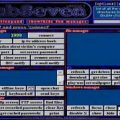 Before looking at how to mitigate a Smurf attack, let’s first understand what it is and why it’s such a problem.
Before looking at how to mitigate a Smurf attack, let’s first understand what it is and why it’s such a problem.
A Smurf works on a weakness of IP and ICMP by sending an ICMP packet to the broadcast address of a network. For example, I could send an ICMP (Ping packet) to every computer on the network 192.168.1.0 /24
I would do this by sending an ICMP packet to the address 192.168.1.255. This would result in every computer in that network (possibly 254 machines) sending me an echo-reply message. So far, this is not the end of the world, however Smurf adds ip spoofing to the equation…
When someone does a Smurf attack, the first thing that they do is an IP Spoof to make the their IP address look like an internal address. For example, I would spoof my address to have a source IP address of 192.168.1.10. Let’s assume that the IP address 192.168.1.10 was the Domain Controller, or perhaps the E-mail or Web server of that network. If I was to now send multiple echo packets to the destination address 192.168.1.255, every machine on that network would now send a echo-reply to the source IP of 192.168.1.10 (The internal server). This means I have just caused every machine on the target network to attack the internal target machine with echo-replies. Of course this is not the end of the world if this happens once or twice, but what if I did this a few thousand, or a few hundred thousand times? What if the target network was larger and had more than 254 machines? On a larger scale this could cause the target machine to be so over loaded with echo-replies that its network card becomes saturated to a point where its prevented from doing its job… denying it from doing it’s service… “Denial of Service” (DoS). Since this attack is not coming from me directly, and I’m forcing multiple machines to attack a single host, this now becomes a “Distributed Denial of Service” (DDos) attack.
So in order for us to prevent Smurf attacks happening on our networks, we need to make sure we block directed broadcast traffic coming into our network.
Below is the configuration required to stop Smurf Attacks. Use the diagram as a reference for the ACL’s

AOIP.ORG(config)# access-list 101 deny ip any host 192.168.1.255 log
Deny the directed broadcast
AOIP.ORG(config)# access-list 101 permit ip any 192.168.1.0 0.0.0.255 log
Allow unicast traffic
AOIP.ORG(config)# interface fa0/0
AOIP.ORG(config-if)# ip access-group 101 in
Attach the ACL to the interface for inbound traffic
AOIP.ORG(config-if)# exit
Now for the other direction……
AOIP.ORG(config)# access-list 102 deny ip any host 10.0.1.255 log
Deny the directed broadcast
AOIP.ORG(config)# access-list 102 permit ip any 10.0.1.0 0.0.0.255 log
Allow unicast traffic
AOIP.ORG(config)# interface fa0/1
AOIP.ORG(config-if)# ip access-group 102 in
Attach the ACL to the interface for inbound traffic
AOIP.ORG(config-if)# exit
AOIP.ORG(config)#
In the above configuration we have now mitigated Smurf attacks from either network segments in either direction.






2 thoughts on “Mitigating Smurf DoS Attacks”
Nice post buddy………….KEEP POSTING
Hey, I found your blog in a new directory of blogs. I dont know how your blog came up, must have been a typo, anyway cool blog, I bookmarked you. 🙂